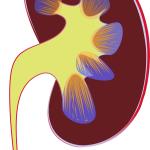"Regret is a negative cognitive or emotional state that involves blaming ourselves for a bad outcome, feeling a sense of loss or sorrow at what might have been, or wishing we could undo a previous choice that we made." [1]
dialysis
For those patients with end-stage renal disease (ESRD) that has reached the point where their kidneys no longer function, dialysis offers a form of chronic life support.
Hospice care focuses on patient comfort during their last months of life differing from palliative care in that there is no longer any focus on “curative treatment.” Medicare has provided this benefit since 1983 requiring
California has a proposition on the state-wide ballot that will limit the revenues of dialysis centers to 115% of the cost for “direct patient care services” and “health care quality improvement costs.” [1] It has attracted national attention give
The story of a two-year-old toddler in need of a kidney transplant has made the news. Apparently, A.J.
By definition, people who are undergoing hemodialysis pumpin







